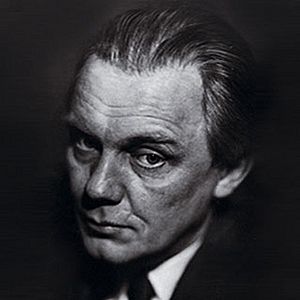Gunnar Asplund facts for kids
Quick facts for kids
Gunnar Asplund
|
|
|---|---|
 |
|
| Born | 22 September 1885 |
| Died | 20 October 1940 (aged 55) |
| Nationality | Swedish |
| Occupation | Architect |
| Buildings | Villa Sturegården, Nyköping, (1913), The Snellman House, Djursholm, (1918), Stockholm (1920) The Listers County Court House, Sölvesborg, (1921), The Skandia Cinema, Stockholm (1923), Stockholm Public Library, (1928), |
| Projects | Skogskyrkogården (1914-40), Gothenburg Courthouse Extension (1913-37) |
Erik Gunnar Asplund (born September 22, 1885 – died October 20, 1940) was a famous Swedish architect. He is known for two main styles. First, he was a key person in a style called Nordic Classicism in the 1920s. Later in his life, he became a big supporter of the modernist style. This modern style became very popular in Sweden after the Stockholm International Exhibition (1930).
Asplund also taught architecture at the Royal Institute of Technology in Stockholm starting in 1931. His most famous work is The Woodland Crematorium in Stockholm (built 1935-1940). Many people think it's one of the best examples of modern architecture ever built.
Contents
Amazing Buildings and Designs
Gunnar Asplund designed many important buildings. Here are some of his most well-known projects:
Stockholm Public Library
One of Asplund's most important works is the Stockholm Public Library. It was built between 1924 and 1928. This library is a perfect example of the Nordic Classicism style, sometimes called "Swedish Grace." It was very influential, even inspiring the famous Finnish architect Alvar Aalto when he designed the Viipuri Library. Aalto looked up to Asplund as his teacher.
Gothenburg Courthouse Extension
Asplund also worked on extending the Gothenburg Courthouse building. He started this project in 1913 and finished it in 1937. This building shows how his style changed over time. He started with a more classical look and then moved towards a functionalist style. This change was similar to what other modern architects in Europe were doing.
Skogskyrkogården (The Woodland Cemetery)
Gunnar Asplund worked with another architect, Sigurd Lewerentz, to design Skogskyrkogården. This is a large cemetery that was created between 1914 and 1940. It is so special that it is now a UNESCO World Heritage Site. This means it's recognized as important to the whole world.
Stockholm International Exhibition (1930)
Asplund and Sigurd Lewerentz were also the main architects for the temporary Stockholm International Exhibition (1930). Even though the buildings were only meant to be temporary, the Entry Pavilion was very important. It was built with modern materials like exposed glass and steel. This design influenced architects around the world, even before it was fully finished. For example, it inspired the Turku Fair in Finland, designed by Alvar Aalto and Erik Bryggman. They even traveled to Stockholm to see it being built!
Gunnar Asplund is seen as one of the most important modern Swedish architects. He had a big impact on many architects in Sweden and other Nordic countries who came after him.
His Ideas on Space
In 1931, when Asplund became a professor, he gave a lecture called "Our architectonic concept of space." He didn't write many books or articles about his ideas. However, this lecture became very important for understanding how Asplund and other architects of his time thought about design. The lecture was partly inspired by a famous book called "The Decline of the West" by a German philosopher named Oswald Spengler.
Gallery
See also
 In Spanish: Erik Gunnar Asplund para niños
In Spanish: Erik Gunnar Asplund para niños






